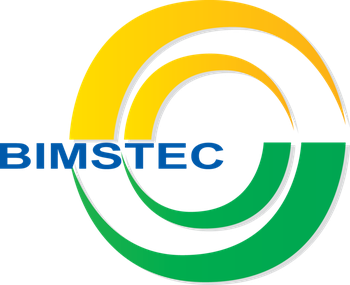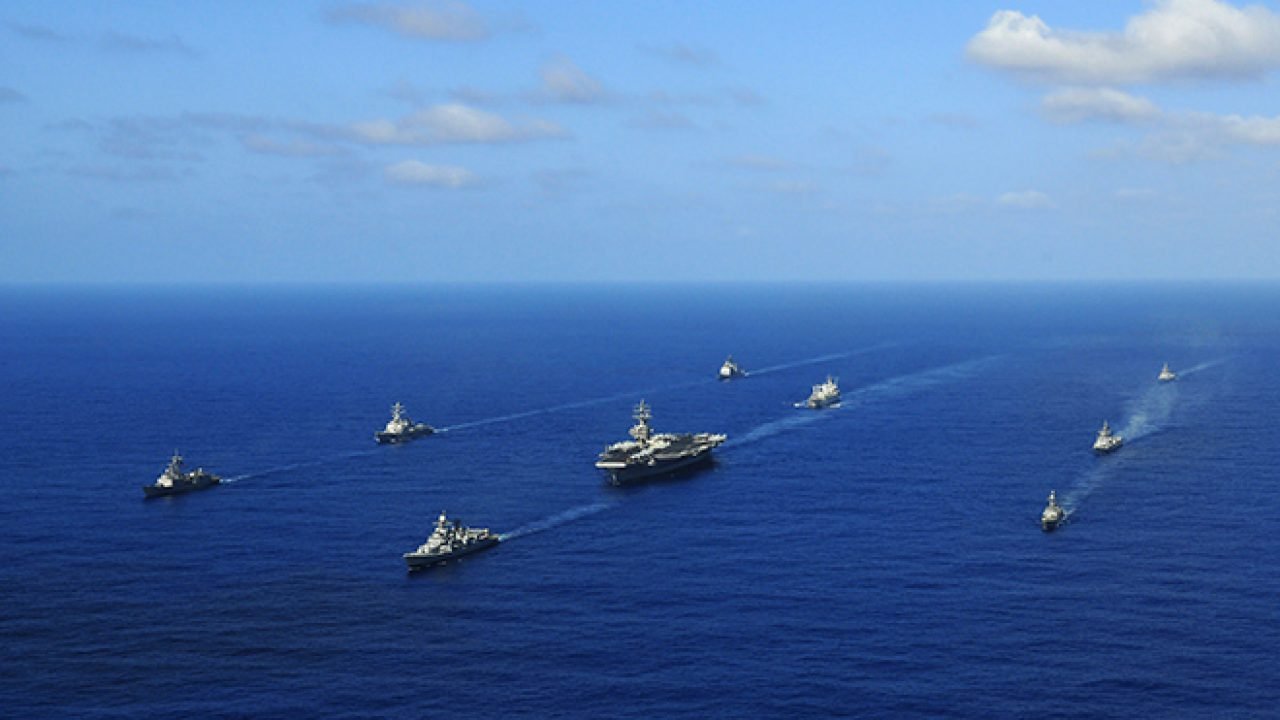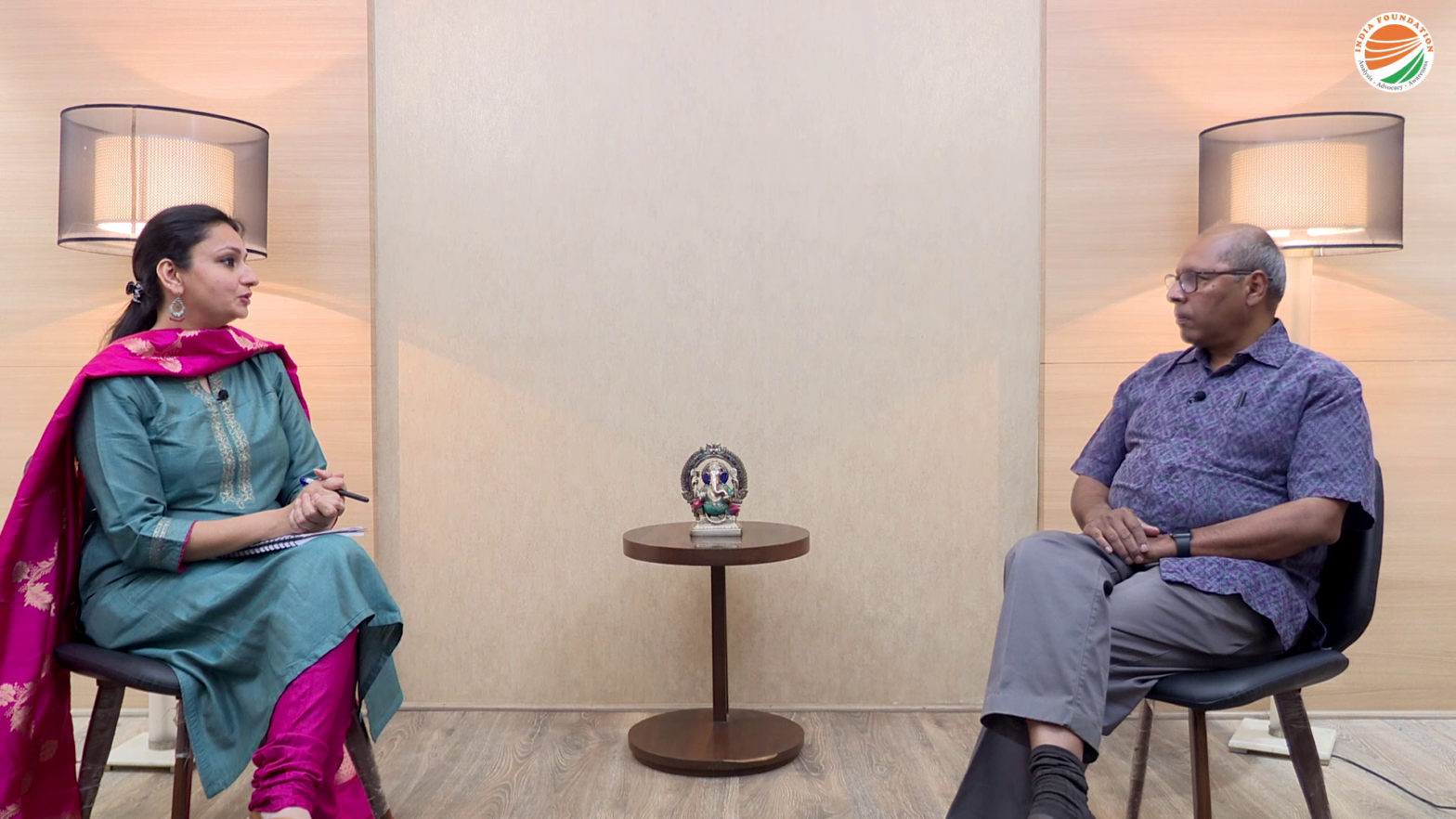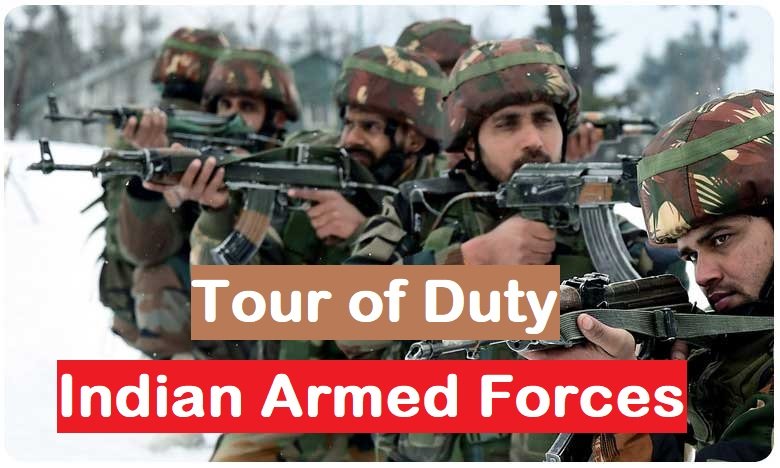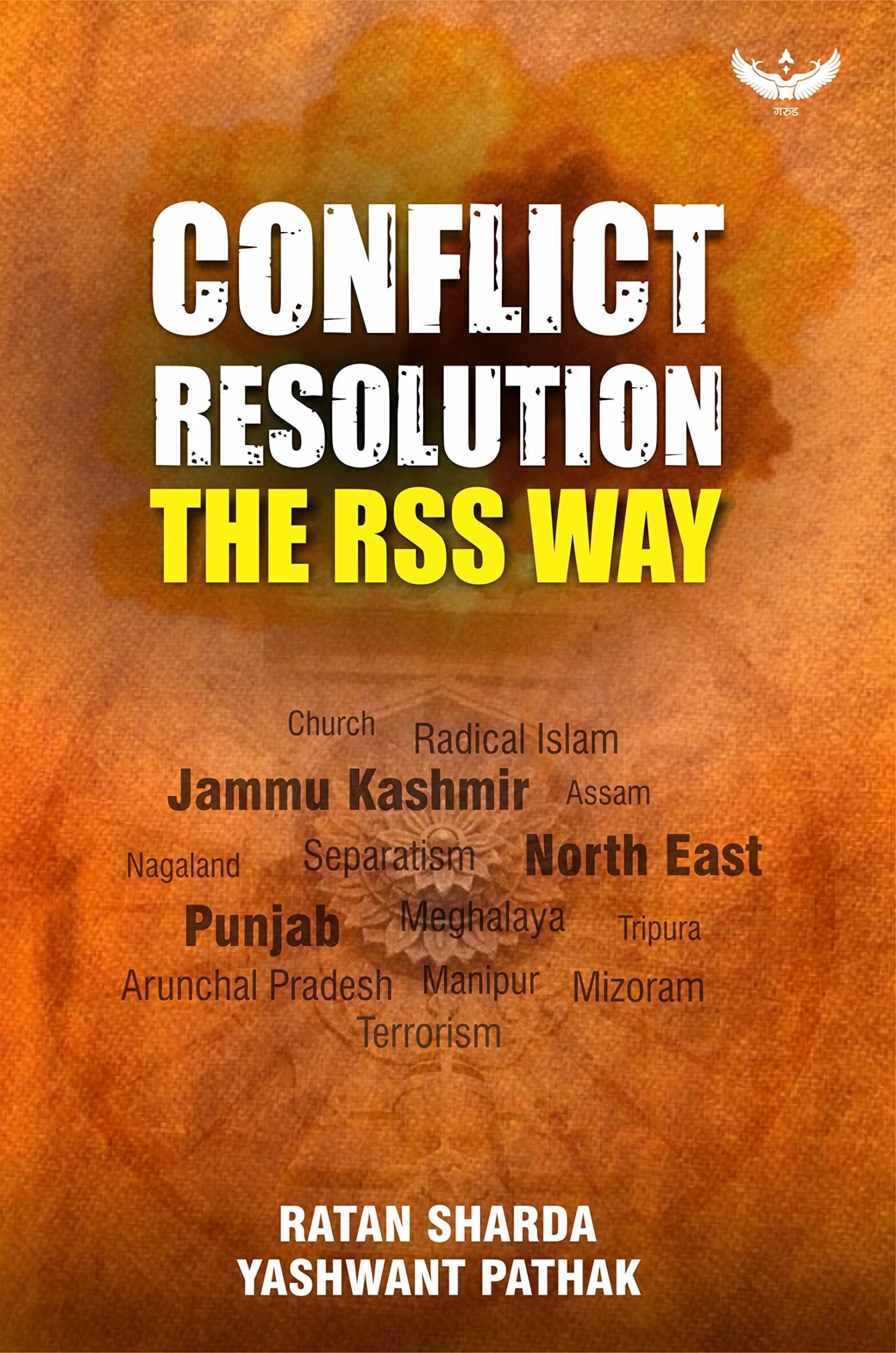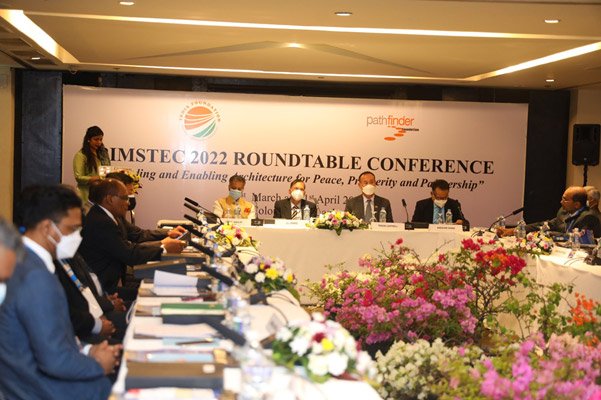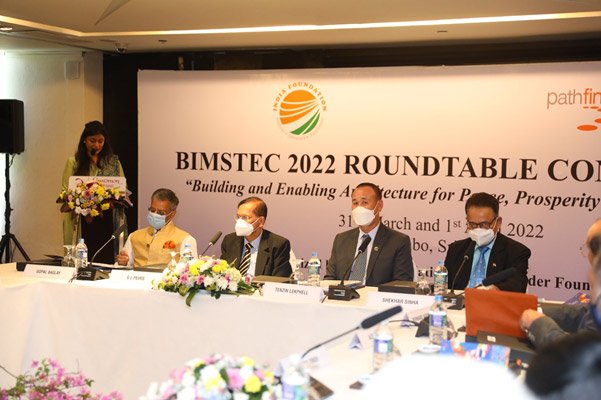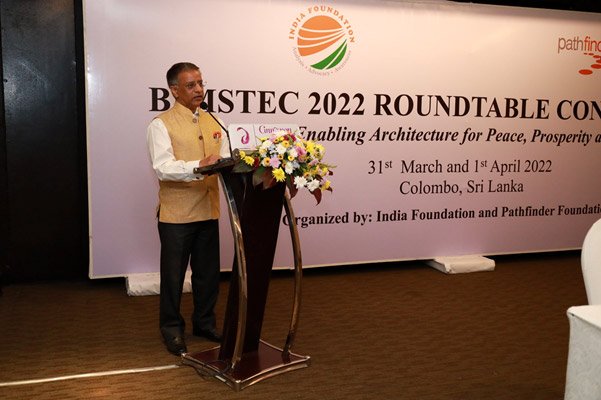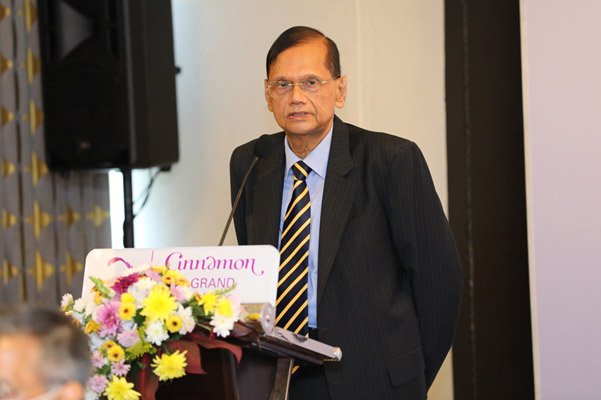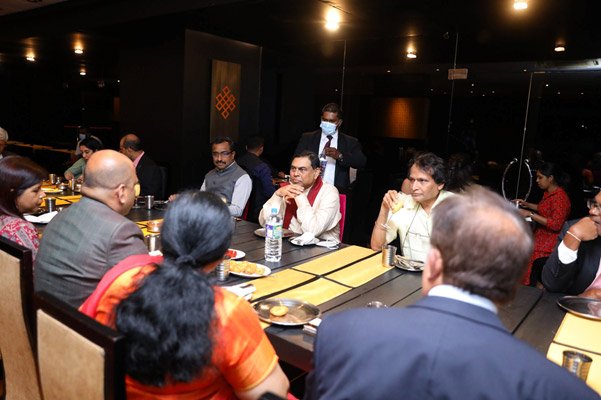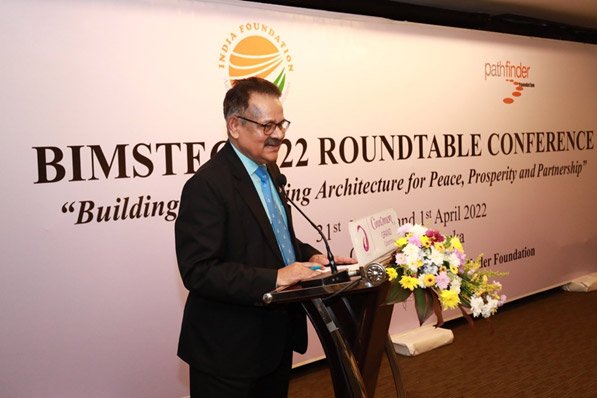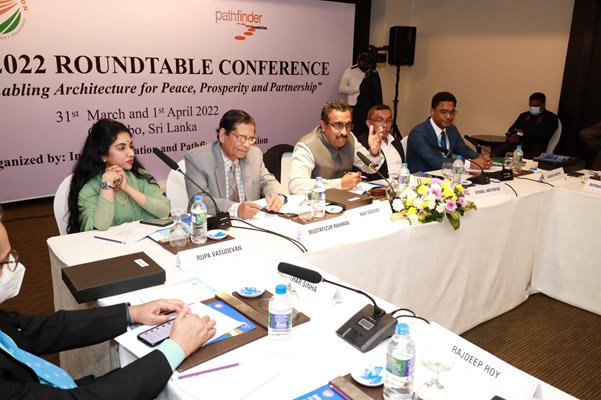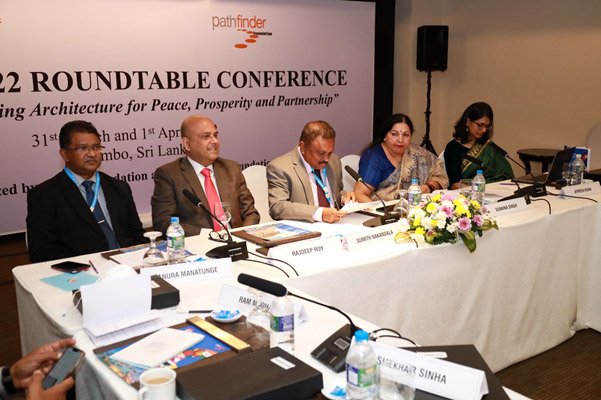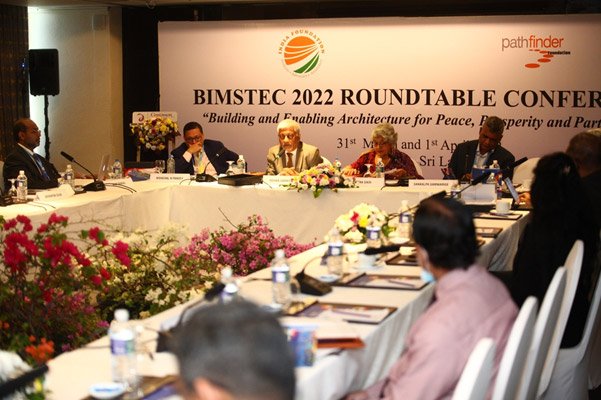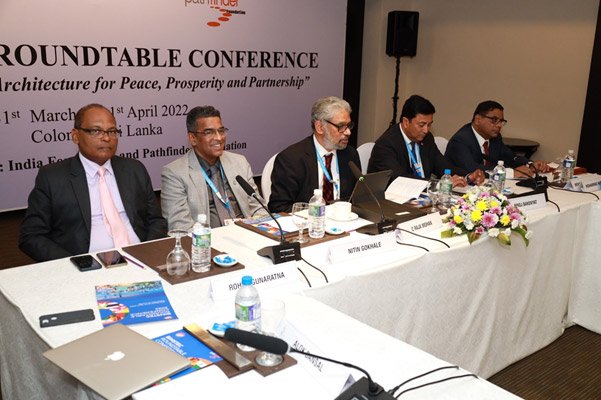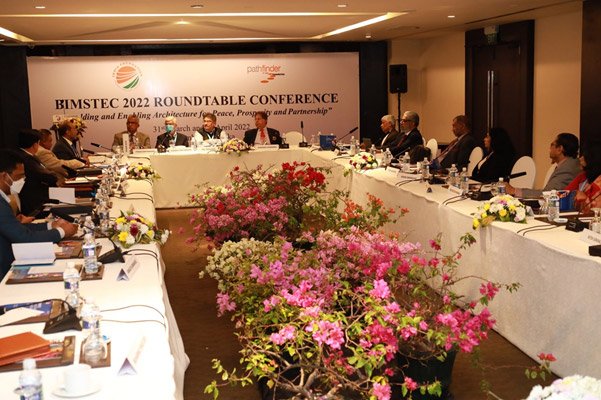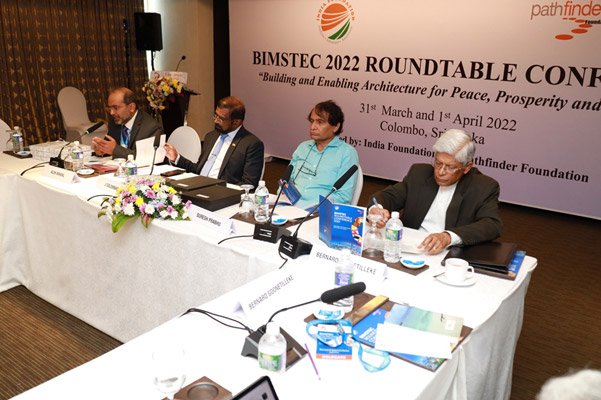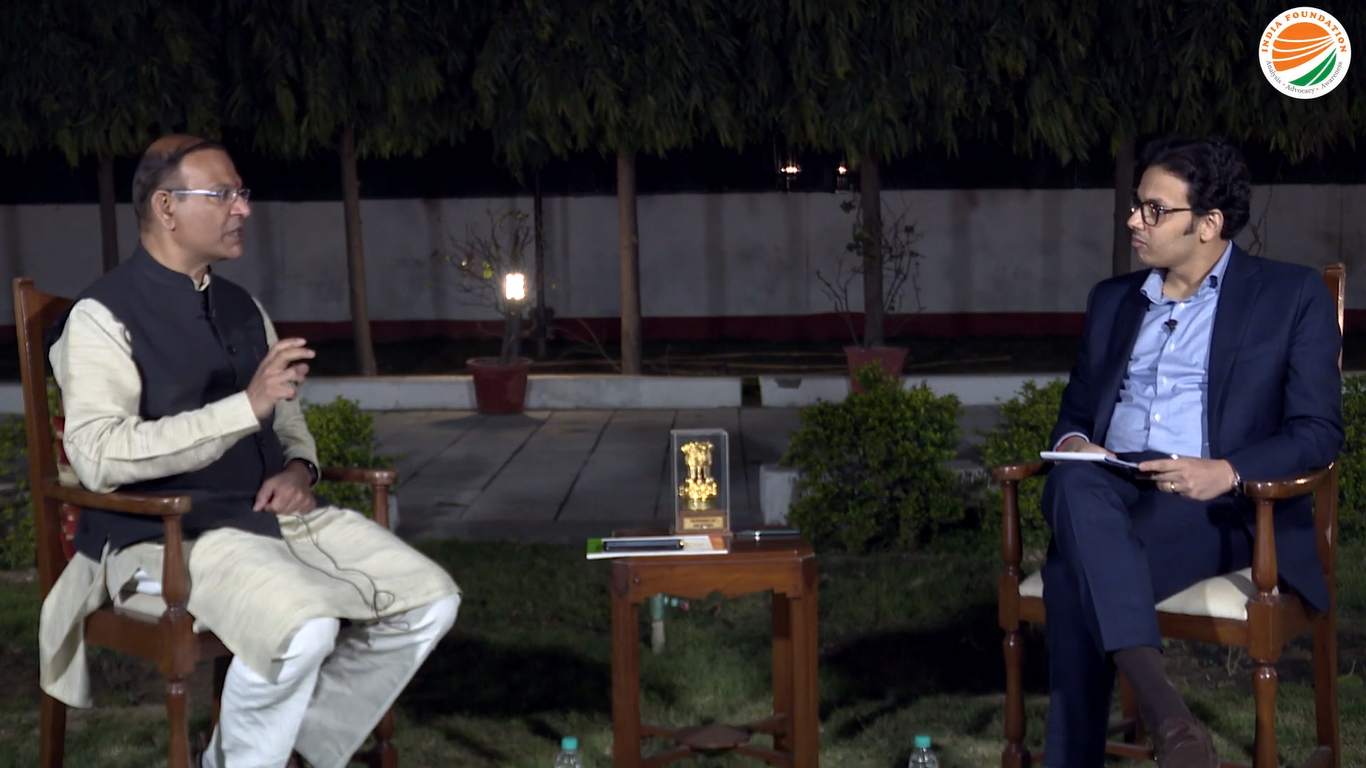The Bay of Bengal Initiative for Multi-Sectoral Technical and Economic Cooperation (BIMSTEC) has come of age. We have just had the 5th Summit hosted by Sri Lanka (30 March 2022) in a digital format due to the pandemic. It generated lot of media curiosity, especially in the region, as several new initiatives and increased financing were announced by the seven Heads of State. All of them underscored the importance of this largest Bay in the world, that lies in the heart of Indo-Pacific, as mentioned by a well-known thinker C. Raja Mohan. Unfortunately, it is also the least connected region. Hence 3Rs connectivity with Rail, Road and River along with digital and fintech connectivity through multimodal mode would have to be created. Negatives and shortcomings that prevailed in other regions like SAARC could be avoided to let BIMSTEC achieve its fullest potential. As such BIMSTEC, due to prolonged inaction since inception in 1997, has waited exceptionally long in making its pronouncements heard and felt in the conventional mainstream media.[1]
As for India – a key driver of the initiative, it has acquired a new salience in its international discourse as the areas of collaboration and intra-BIMSTEC synergies are becoming increasingly relevant. BIMSTEC has become a ‘Triveni’ or confluence of India’s ‘Neighborhood First Policy’ and ‘Act East Policy’ which inter-alia, dwells on primary physical, economic and digital connectivity and addressing mutual challenges and concerns like counter terrorism collaboration and climate change. It is also looking to build greater and resilient socio-economic edifice for mutual advantage of all partners in progress. In this quest it is imperative that efforts are made to sensitise all concerned about its aims, objectives, directions and priorities and quantifiable roadmap and achievements so very essential to the BIMSTEC geography in particular and global audience in general.
They would also need to be told of challenges—both intrinsic and external—since we live in a global village and truth must be told for sustainability and confidence. Most people don’t know what BIMSTEC is all about and the longish statements issued after various meetings and Summits are too copious to be deciphered by the ordinary people. Hence a smart communication methodology would need to be devised as media organs and style has undergone a tremendous shift in recent decades with 24×7 TV channels and social media in overdrive. An organic interactive dialogue mechanism encompassing the holistic spectrum may be of significant help but for that continuous upgrading of authentic communication of relevant content will have to be made available. Not an easy task but will have to be done and that’s where government and media will have to be on board and in sync in an honest manner if a positive ‘Brand BIMSTEC’ is to be generated.
Learning from others can be of some help. There have been other regional and sub-regional organisations like the European Union, NAFTA and the ASEAN (Association of South East Nations) which have remained in news and have caused sufficient interest among the constituents and beyond since there have been issues and initiatives that are often of interest to their audiences and readers. SAARC has been in news for wrong reasons because the India-Pakistan rivalry has often played at the regional level due to bilateral context. At the same time, issues like cross-border terrorism and support from the Pakistani deep state and Islamabad’s inability or lack of resolve to contain the terrorism from its territory against India have always generated headlines. Consequently, SAARC’s efficacy has been undermined.
Many of the friends in the media, often claim that ‘Good News is No News’ and ‘Friction is the fruitful’ and that is precisely the predicament most governments and the diplomatic missions face. One can argue that they have remained in the news because of a certain sense of friction being present, be it be a Trump junketing the multilateralism and institutions like UN, WTO, WHO or CPTPP and completely junking NAFTA, revising it altogether after two decades or for that matter BREXIT keeping the world guessing of its impact on the global landscape and on the EU itself. Likewise, RCEP (16 countries Regional Comprehensive Economic Partnership) remained in news because India, despite negotiations, stayed out of it. India and UAE signing the Comprehensive Economic Cooperation Agreement in record time of 88 days with ten times the pages it has been inscribed on, raised the bar of expectations because it has a novelty of sorts.
I recall the 1994 visit of the then Prime Minister PV Narasimha Rao to USA – a visit I was handling in the mission. The bilateral visit broadly went unnoticed despite all the critical elements of the program being there. When I spoke to several of my media friends about their lack of interest, they said what is so great about a PM visit. USA can boast of several heads of governments and delegations visiting on a daily basis. They also said that ‘The Good News is no News’ and the Press Releases issued by diplomatic missions are hardly of media interest which looks for ‘Masala’ rather than staid list of unverifiable achievements that are in any case not of much interest to their respective audiences. Another interesting comment was that the Embassy Press Releases were mostly for domestic consumption. During the same visit, for the visit of the PM to Boston, the extensive security briefings we carried out at the Four Seasons Hotel in Boston, scared the hotel security and authorities so much that they sent some of their staff on paid leave. While we were happy with the overall outcome of the visit, I got a call, on reaching my office in New York after returning from Boston, from my friend, who was the Foreign Editor of Boston Globe. He told me that the hotel employees had filed a case and claim at the US Discrimination Commission against the hotel and the Indian PM. While we tried to douse the fire, the news spread like wild fire for days together. This is how the media functions, operating primarily to attract audiences in a highly competitive informational battle for supremacy. That is true for major media organs, hence newsworthiness is an important vector.
Governments and the rich and the mighty do control and manipulate media, either by owning it or through advertising revenue stream. One often hears that the Chinese government has been investing in western media to the tune of over USD 6 billion to create stakes and constituencies and thereby to propagate the desired narratives. At the same time news bytes of interest do generate some traction with the traditional media and even more so with social media. Social media has become the biggest tool in the hands of ordinary citizen. Citizen journalism has become a reality that can become a tool and a challenge to contend with. If there is an interesting news, it can exponentially multiply the outreach. At the same time, more often than not, since we do not have tools for verification of newsworthiness and its veracity in real time, the fake news has become a major challenge and a great deal of damage is done before the truth emerges.
Sometimes, action is taken against even the high and mighty whose messages are taken down be it Myanmar military regime leader Ming Aung Hilaing or former President Trump of USA. On the other hand, in the ongoing Ukraine-Russia war, truth and independent reporting has become a casualty of information warfare. Democracy vs autocracy and the use of the powerful media tools often plays their own dynamic even if essentially there may not be a significant interest. Twitter and Facebook banned President Trump for his incendiary remarks in January 2021 when the citadel of democracy was attacked in Washington DC. Although social media is trying to develop certain ethics, these have got a good beating during the recent Russia -Ukraine crisis where they gave license to people to even indulge in hate messaging against the Russians. Psyops and disinformation campaigns are a reality, not only during wars and conflicts but also during peace time. It is a constant process in one theatre or the other. Constant vigil against such disruption is a sine qua non.
Beyond the classic frameworks that underpin brand development initiatives, the fundamental purpose of building a brand is to create resonance with the people and among them. Our society’s pain points, their aspirations, their core needs—these are among the key metrics a successful brand must endeavour to address. By speaking to them directly about what matters most to them, BIMSTEC can create awareness, recognition, positive association, and ultimately, the buy in of its audience. Embodying the culturally relevant and accessible tone of voice, language, emotion and values, BIMSTEC must position itself as an ally of the people, existing in its very essence to support the needs of economies that remain insulated from the first world stage at large, and so, need a voice that is louder, bolder, uncompromising and persistent. BIMSTEC’s ethos must be woven into a narrative that inspires, creates confidence and builds faith and trust among its vastly diverse target demographic.
In a hyper-connected world like ours today, the current economies we aim to support still remain largely inaccessible. Leveraging the local government and media houses creates a direct channel of communication and reach between BIMSTEC and the people it stands for. Not only do these mediums have the required access and influence to make or break a brand’s identity, impact and success, but collectively, they also possess the power to direct consumer narratives, perception and understanding.Activating their strength in a purposeful manner can facilitate the unleashing of true brand potential, ultimately creating a platform that allows a two-way win—brand awareness among the people, and a voice for the people.
In order to carry forward the aims and objectives of the Organisation it is important to have a strong, functional and well-funded Secretariat. Fortunately , the Declaration endorsed this view by stating “Agree to enhance the institutional capacity of the BIMSTEC Secretariat, including through financial and human resources, in order to enable it to coordinate, monitor and facilitate implementation of BIMSTEC activities and programmes; and initiate project proposals as agreed by the Member States as well as fulfil any other responsibility entrusted to it in an effective and efficient manner and agree to raise the numbers of Directors to seven, one from each Member State, in a staggered manner”. Additional funding has also been committed. Hopefully the Secretariat will now follow-on key issues and tasks assigned to them by the Fifth Summit.
BIMSTEC is a unique sub-regional collective that encompasses the complementarities of the maritime economy and security with mountain economy. India in the past has been a trading nation with dozens of good ports and reliable shipping lines and routes. The recent SAGAR (Security and Growth for all in the Region) initiative by Prime Minister Narendra Modi clearly is relevant for the members since it seeks to defend the national interests through deepening of economic and security cooperation by engaging in collective action for peace and security and deepening regional integration based on sustainable development. It is in the interest of all stakeholders, especially the leaders, to give their best (and not only “timely holding of Summits” but regular ones) to make BIMSTEC a real success story that will benefit them all in the long run lest it becomes another “Rubik’s Cube”.
While we must have a branding and communication strategy the source of information also needs impeccable credentials, especially as those countering the narratives for decimating the importance of the BIMSTEC initiatives through chatbots and social media campaigns or not even giving adequate attention or space to it, have an implicit and explicit agenda for their geo-political or geo economic ends. Hence, they will use a tool that highlights ‘the lack of press freedoms’ and denigrates the news coming out of these countries. Although contested vehemently by countries like India, one may look at the following indices and ranking regarding journalistic liberties as per the 2021 World Freedom Index.[2]The index is not an evaluation of the quality of journalism. The index is an assessment of pluralism, independence of the media, quality of legislative framework and safety of journalists in each country and region.[3]
| Sl No | BIMSTEC Countries | Ranking | Score |
| 1 | Bhutan | 65 | 28.86 |
| 2 | Nepal | 106 | 34.62 |
| 3 | Sri Lanka | 127 | 42.20 |
| 4 | Thailand | 137 | 45.20 |
| 5 | Myanmar | 140 | 46.14 |
| 6 | India | 142 | 46.56 |
| 7 | Bangladesh | 152 | 49.71 |
- Above listing is out of a total of 180 countries
Therefore, while strategising, it will be imperative among other ingredients to factor this inherent bias which means not only trying to address the issues of concern to the Fourth Estate but also to contend with the biases. Any problems and issues in these countries are likely to create far more negative news than the positive slant. Recently, President Biden hosted a Democracy Summit in which Bangladesh and Sri Lanka, the two countries that moved out of the list of Least Developed Countries during the same period and have been doing better on several socio-economic indices were not invited, while Pakistan, an overtly fragile democracy, shadowed by its deep state security outfits shared the podium. It is not only the hypocrisy one is looking at but the power of western Project Democracy.
One should not be surprised if ongoing crisis of democracy in Myanmar or economic troubles of Sri Lanka, Maldives and Nepal and elsewhere could be flagged to denigrate the credibility or potential of BIMSTEC. Or for that matter in the wake of Russia-Ukraine crisis, stance of India and her vote at the UNSC etc. could harbinger a media tirade to degrade her democratic credentials. This biased narrative making is another challenge which needs to be factored. In essence, what is needed the most is packaging, which must be commensurate with reality to the maximum extent possible. This can be achieved through a well-conceived resource rich communication tools and strategy.
One of these could be creation of a Digital News Platform for the BIMSTEC which could generate curiosity and help productively satisfy the target audiences. In the 5th Summit, 14+1 areas of cooperation have been reduced to more practical 7, allocated to each member state. Hence, media capsules on newsworthy positives across the spectrum will have to be created and disseminated through modern tools of communication as well as through conventional media organs including the state controlled or owned who in any case have a larger outreach. Chatterjee argues that the highest international standards of content generation along with the best practices followed in the international media industry need to be adopted in order to realise the intended outcome.[4]
India will need to focus and prioritise its connectivity and infrastructural outreach in the Asian region. In the sub-regional context India by virtue of its size and strength will have to fork out majority of financial and capacity building requirements. To what extent can it pitch in without over-stretching is the moot question! Besides, China will continue to poach into our South Asian and BIMSTEC neighbours and play upon their fears of the “Big Brother Syndrome” alluded to India. Hence, they would continue to seek out both India and China in order to strategically balance their dependency. Therefore, while playing a critical role as an engine for BIMSTEC and other regional and sub-regional groupings, India has to strategically calibrate its power projection and proportionate financial commitments. It is a fact that until the Goa Retreat on the side-lines of BRICS Summit, India’s financial commitment was insignificant and it had not even appointed a Director to the fledging BIMSTEC Secretariat. Such lacunae could easily decimate the claims to a leadership position and the confidence of its smaller partners who might look to it. Hence India took a significant lead to address the key issues at Kathmandu.
Connectivity and Communication are the key ingredients and objectives of the BIMSTEC. Hence, the role and the vision of BIMSTEC can be summarised to improve connectivity between India, Bangladesh, Myanmar, Thailand and other members through a network of multi-modal transport and digital corridors. These networks would facilitate trade, exchange of energy through oil and gas pipelines, promotion of counter terrorism and tourism and increase of communication links leading to what can be termed as a zone of co-prosperity.[5]Role of media is also implicit in it.
Following recommendations might be of some relevance:
- Not many people know about BIMSTEC including from among the academics especially its full form. Some say it is too cumbersome. Should the name be modified to relate to the countries i.e. B (Bangladesh& Bhutan), I (India), M (Myanmar), S (Sri Lanka) T (Thailand) and add N (To denote Nepal) Economic Cooperation Enterprise? So, for branding, the name is to be brought to life. But what is the end game!
- Identify the key drivers and ingredients including objectives, achievements and assessments through a SWOT analysis to create the branding architecture of BIMSTEC. There are plenty of initiatives whose matrix with reference to implementation will have to be created on a regular basis.
- BIMSTEC secretariat needs to be beefed up in its professional media management skills and outreach so that the stories that matter can be advanced to the target audiences. They could work closely with point persons in each member country to develop the requisite narratives.
- Negative publicity would need constant vigil and credible rejoinders that can be formulated not only by the government authorities but by the intelligentsia hailing from the think tanks, media experts, opinion makers and informed change seekers.
- Dedicated digital platform with chatbots could be created to transmit capsules of relevant and verifiable information about BIMSTEC at regular intervals.
- A BIMSTEC app could be considered in English and vernacular languages which would enable easy access to information and its use. Initiatives have to be directly relevant to the developmental aspirations of the people in order for them to be invested in brand building. After all, it is the users who sustain any brand.
- Citizen journalists have become the protagonists of information dissemination in this age of Social Media preponderance as a medium of real time communication. Hence, popular perception will multiply the outreach many fold.
- Perhaps an Institute of International Relations and Journalism could be established, which could eventually provide the right kind of human resources as well as enable crafting of ever evolving strategies to meet the challenges of the times. To start with, this could work in a hybrid format.
- Creation and building upon the Buddhist and other religious travel circuits could be a good interactive initiative where P2P interactions may enhance human connectivity.
- It is also important to facilitate ease of travel for BIMSTEC businessmen, tourists and academics. If possible, visa free travel may be considered simply by strengthening the immigration architecture and real time exchange of data as is done in the EU to counter the threats from undesirable elements as well as transnational criminals.
- If visa free travel is not possible, even a one-yearall-purpose BIMSTEC visa may be considered. As far as possible, to begin with, all member countries could promote their tourist and business potential and work together as a team via the digital platform. E-visa system as existing in India could be extended to all member countries. Studies indicate that Indians who are the biggest per capita spenders on tourism prefer to visit places which have trouble-free connectivity and entry requirements. No wonder over a million and half Indians travel to Thailand every year.
- National interest harmonisation may help in all the key areas for effective communication. Disputes draw more attention.
- Perhaps an Eminent Persons Standing Group may be created to research and design communication strategies as well as to advise the Secretariat on possible way forward in given and evolving situations.
- Financial viability of the organisation and Secretariat is essential for undertaking meaningful initiatives.
- Finally, symbols play a significant role in connecting with people and we may have to look at the possibilities and broad based and acceptable commonalities across the BIMSTEC region.
Author Brief Bio: Ambassador Anil Trigunayat is a former Indian Ambassador and a regular contributor on foreign policy issues. He is associated with several Think Tanks including as Distinguished Fellow with Vivekananda International Foundation
References:
[1] Arjun Chatterjee in Chapter 11 of the ‘Bimstec -The Journey and the Way Ahead’ edited by Sreedha Datta , Pentagon Press (2021)
[2]2020 World Press Freedom Index | RSF
[3]Countries ranked by freedom of press – The Facts Institute
[4] Arjun Chatterjee in Chapter 11 of the ‘ Bimstec -The Journey and the Way Ahead’ edited by Sreedha Datta , Pentagon Press (2021)
[5]BIMSTEC and BICM: Two Competing Sub-Regional Frameworks? | Vivekananda International Foundation (vifindia.org)

